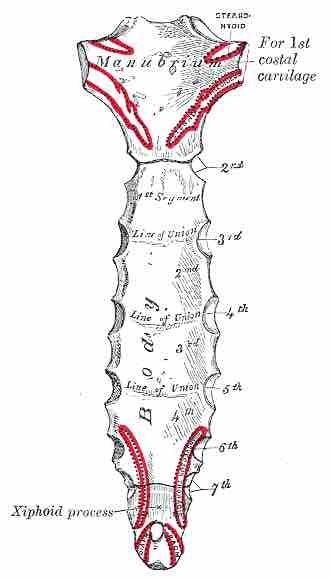The sternum, or breastbone, is a long, flat, bony plate that forms the most anterior section of the ribcage. The sternum is highly vascular in nature and covered with a thin layer of compact bone providing a degree of flexibility.
Together with the anterior ribs it helps to protect the heart and lungs from damage, as well as facilitates the expansion and contraction of the thoracic cavity during respiration. During development the sternum is comprised of four individual sections called sternebrae, which fuse to form the sternum in adulthood.
Structure
The sternum is divided into three regions:
- The manubrium.
- The gladiolus.
- The xiphoid process.
The manubrium is the most superior region of the sternum and articulates with the clavicles or collarbones and the first pair of ribs. The manubrium is the thickest portion of the sternum as it carries the greatest physical load.
Located below the manubrium, the gladiolus is the longest portion of the sternum and articulates with the ribs, either directly or indirectly, through the costal cartilage
The thin, pointed xiphoid process forms the most inferior region of the sternum to which the costal cartilage and cartilage of the celiac, or solar, plexus attaches.

Sternum
This image shows the parts of the sternum.